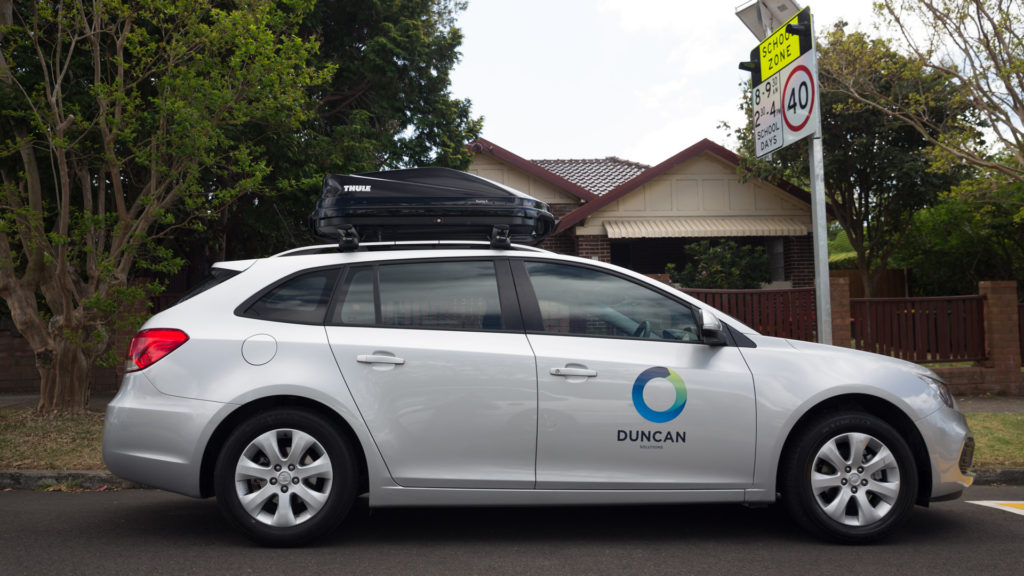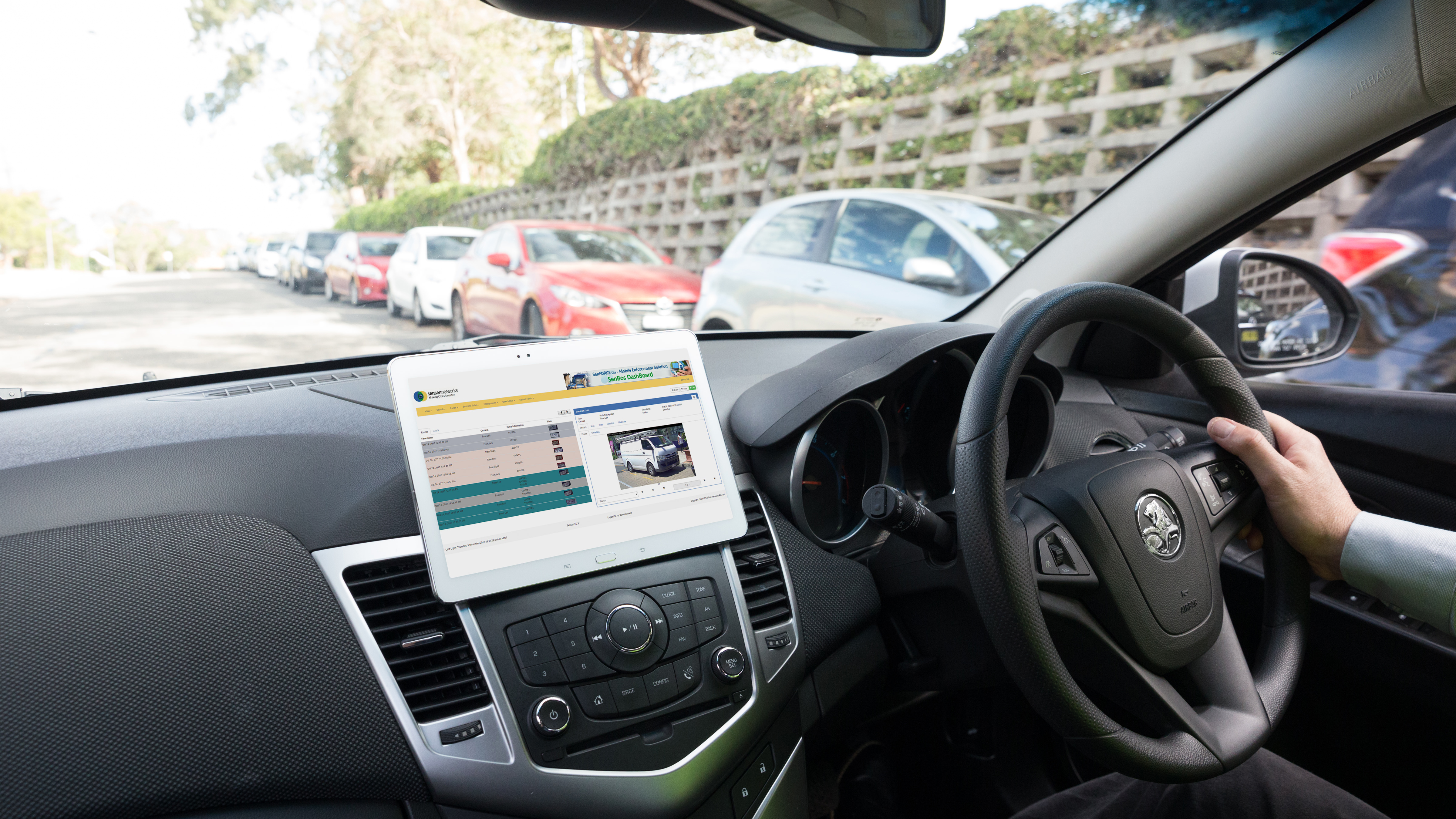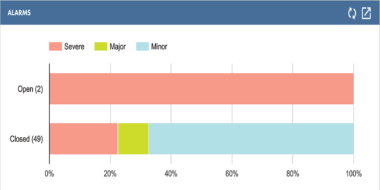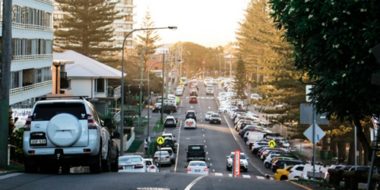

Mobile Licence Plate Recognition (MLPR) technology is one of the most accurate and cost-effective on–street management solutions. By employing mobile cameras, parking authorities and councils can significantly improve efficiency and the way in which vehicles are monitored and managed.
Here are three benefits that can help you overcome common hurdles:
Improve compliance, officer safety and comfort.
When using mobile licence plate technology (MLPR), enforcement officers and police forces can enjoy peace of mind in the field. Before, the only option was to patrol looking for non-compliant cars, with officers exposed to relentless bending and chalking, putting themselves at risk of repetitive strain injuries – not to mention massive inefficiency. Now, the PSO can spend the majority of their shifts inside enforcement vehicles that are mounted with a weather proof luggage box (POD) mounted on roof racks.
The Video Processing Unit (VPU) processes the mobile licence plate recognition results and displays these on an inboard, web-enabled tablet device. Officers monitor the device and are alerted to any vehicle detected as having parked for too long in a time restricted zone. As a result, the time spent outdoors, in sometimes extreme conditions, is significantly reduced and work health and safety standards are increased.
Potential abuse and assault from disgruntled non-compliant drivers are a concern enforcement officers face on a daily basis. With the use of MLPR technology, officers have access to better real-time data, which includes LPR and colour context images, GPS coordinates and time/data stamps. This not only helps confirm reasons for giving infringements, but also helps cases hold up in a Court of Law. The safety of the vehicle also reduces the risk of attack that officers on the street may have faced before.

MLPR licence plate recognition technology can track up to 1000 plates per hour.
Enhance enforcement team efficiency
Through the use of mobile licence plate recognition cameras, management teams will notice a vast improvement in enforcement team’s efficiencies. The process is simple: switch the car on (it starts automatically), choose to enforce, choose to read plates, nominate left or right camera, drive.
Before, officers undertook time-consuming and labour-intensive walking patrols to look for non-compliant vehicles. Now, the same officers simply rely on real-time updates of only those cars that have overstayed. This eliminates the need to chalk every car. Instead, the MLPR cameras help officers review more parked cars than ever before.
Better yet, when using an MLPR-mounted car, a route which took the best part of a day was covered in 45 minutes. Such technology has the ability to track 1,000 plates per hour, which would usually require four to five rangers over an eight-hour period. This allows management teams to deploy existing staff efficiently on the different areas – or deal with other law enforcement issues – and collect data from a wider pool of bays and vehicles.

When using an MLPR-mounted car, a route which took the best part of a day was covered in 45 minutes.
Increase compliance and accuracy
A configurable combination of Duncan’s sensors and MLPR capture systems offers unparalleled benefits when it comes to compliance and accuracy. One of the main benefits is how quickly and effectively these systems have changed bad parking habits.
City planners can now analyse the motorist and citizens behaviours and adapt and visualise the best infrastructures to facilitate the traffic and safety of all.
The mobile licence plate recognition is a preferred method as it has the advantage to sneak in every single hidden street with or without sensors or fixed cameras. Fixed cameras cannot always cover all angles and are not as subtle. With MLPR, there are no constraints of infrastructure, structures, angles etc, the camera can be angled to capture parallel, 45°, 60° and 90° angle parking.
A configurable combination of automatic LPR and manual capture options means that more plates can be ‘marked’ over any given period, whilst maintaining the highest licence plate accuracy in the smart parking industry.
By using Duncan Solutions’ mobile licence plate recognition cameras, one of our councils was able to decrease the number of illegal school drop-offs/pick-ups. Council staff driving MLPR-mounted cars were able to pass through several school zones and capture offending vehicles and their licence plates (up to 60 photos within a second).
At the end of the shift, this data was processed and parking infringements sent to non-compliant vehicles that may have once gotten away with offending. As a result, the council found that compliance rates were dramatically improved.
Another good point the council noticed is the fact that the car is subtler than officers walking on the street. It gives the public less opportunity to create dangerous situations.
MLPR cameras possess fantastic to-the-centimetre GPS accuracy – one of the highest in the industry and one with a successful read rate at up to 50 km/h. Better yet, councils using older systems have seen an increase in accuracy when switching to Duncan’s MLPR. What was once only 50 per cent on average, accuracy rates now average at 85 per cent.
Results show compliance climbs dramatically after only a few months of regular MLPR enforcement which boosts paid-parking revenue. However, infringement revenue often remains higher in areas where large numbers of transient parkers continue to infringe.
If you’re ready to see how mobile licence plate recognition (MLPR) cameras can improve your city’s parking operations, get in touch with the team at Duncan Solutions today.
















